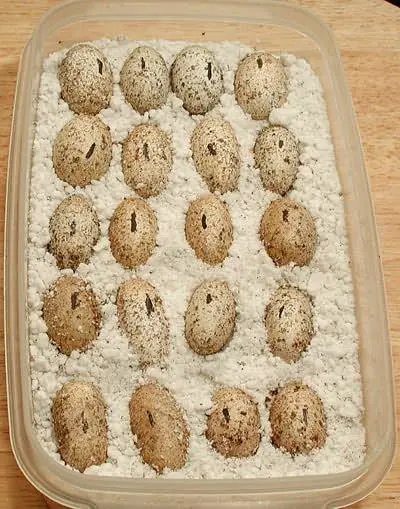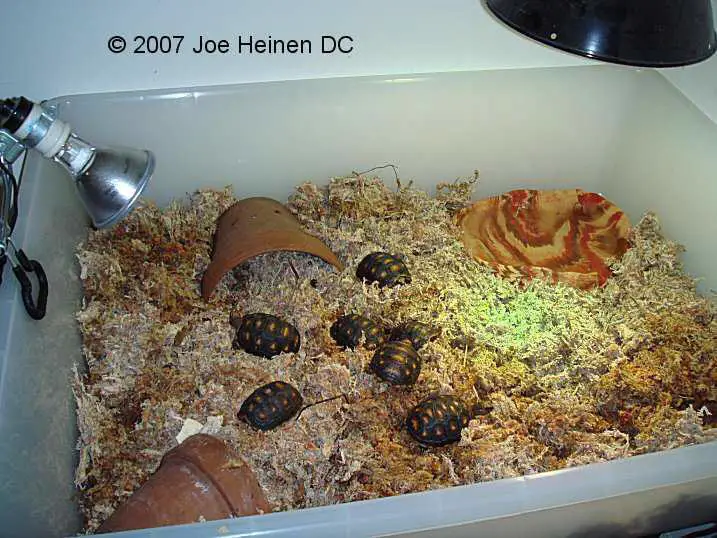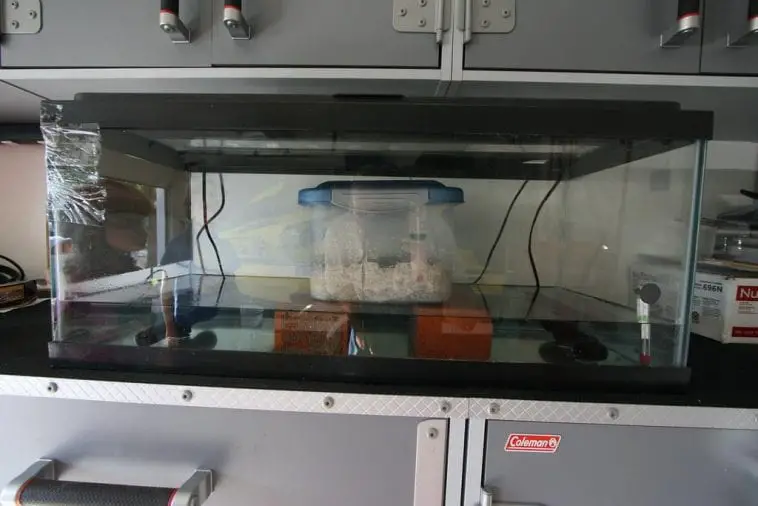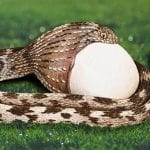In captivity, knowledge about the proper retention of reptile egg is important to make sure that the breeding and reproduction is successful. As a reptile breeder, it is your obligation to ensure that the eggs will hatch properly. With the use of the right materials and proper care, you can easily take good care of the reptile eggs. You may need to set-up an incubator with the right substrate and temperature until they hatch. This article will show you the proper retention of reptile eggs.
There are two ways by which you can take care of a reptile egg. The first one is to assist the reptile parents in incubating their eggs and just proceeding with the normal process. The reptile can bury their eggs in the substrate, or you may place a separate container in the vivarium where the eggs can stay. You may need to use heat lamps and thermometer to maintain the needed temperature. The second way of proper retention of reptile eggs is through the use of an incubator. The whole process will be given below.
How to Set-up An Incubator
In setting up for an incubator, you may need to choose for the right container that will hold the eggs. The containers that you can use are like those containers that you can see in your kitchen like deli cups, sandwich containers, or small and large containers with a lid; it will just depend on the number of reptile eggs that you have. The cover of the chosen container should be poked with holes, so there will be enough ventilation. Investing in a good incubator will make sure that the environment for the eggs is well ventilated.
The incubators are purchased from a pet store or farm supply store. Incubators are a must-have if you are to take care of eggs because it regulates the temperature to ensure that the place is insulated. There are types of incubators that are suitable for a certain type of reptile. For example, the Hova-Bator incubator is made specifically to incubate lizards, crocodiles, etc. but there are still incubators that you can use in general. The most important factor for having an incubator is temperature. There is the exact temperature that you need to maintain for a certain reptile species.
If you want to be resourceful, you can create your own incubator just by using the things that you can see at home, such as a fish tank, aquarium heater, bricks, and plastic wrap. You’ll just need to place the bricks inside the fish tank and add water just below the top of the bricks to ensure that the main container where the eggs are won’t be wet. Set the aquarium heater in the correct temperature and place the container with the eggs on top of the bricks. To ensure that the fish tank has the right heat and humidity, cover the tank with a plastic wrap.
How to Properly Place the Eggs in the Incubator

Before transferring the eggs into the container for incubating, you may need to mark the side of the egg that was facing upwards when you see it using a pencil so you can transfer it to the container in that same position as well. The eggs are fragile that it can be damaged and won’t develop when it is accidentally turned upside down, so marking it will ensure that it will still stay in place or in a top position when you place it in the incubator. Make sure that the eggs are separated and not piled. If the eggshells are stuck together, don’t force them to remove it because their fragile shells may break. Be very careful in placing the eggs in the incubator; avoid it from getting rolled so that the embryo inside will not get hurt.
Monitoring the Eggs Before Hatching

Placing the eggs in an incubator is useless if you don’t maintain the different factors such as the temperature and humidity level. The temperature and the humidity level are two of the most critical factors that will make or break your breeding session. Usually, the ideal temperature that should be maintained is between 72-76 degrees Fahrenheit. Don’t allow the temperature to go beyond 80 degrees Fahrenheit or go below 70 degrees Fahrenheit. Your goal is to ensure that all eggs will hatch and that no eggs will die.
The use of a thermometer is helpful in ensuring that there is no fluctuation in temperature in the incubator. To help you with the humidity level, you may use a substrate where the eggs will stay is good at retaining moist such as perlite and vermiculite. It can’t be avoided to see eggs that had been collapsed with molds that are starting to grow, remove it immediately since it is already dead so as not to contaminate healthy eggs.
Caring for the Hatched Eggs

You need to know the tentative number of days before the eggs will hatch so that you can prepare their enclosure. If you have their parents, it is not advisable to place the juveniles in their cage because it might be mistaken as food unless they hatched inside the vivarium of their parents. The eggs may not hatch all at the same time; one egg may hatch one day ahead from the others, so make sure that the cage where you can transfer the hatchlings is ready. The incubated-hatched juveniles should be placed in a separate cage with the right heat and humidity. Some reptiles will shed their skin within 24-48 hours, and it is important that the shed will come off as one.
Final Thoughts
Doing the retention of the reptile eggs process properly is crucial. It may be a tedious process, but for sure, as soon as you see the hatchlings, you will feel relieved and fulfilled. Each step in caring for the eggs before it hatches is important because you can make or break it. If the eggs that you’ve taken cared of hatched, you are not only helping increase their population, but you are also bringing in balance into the ecosystem.


